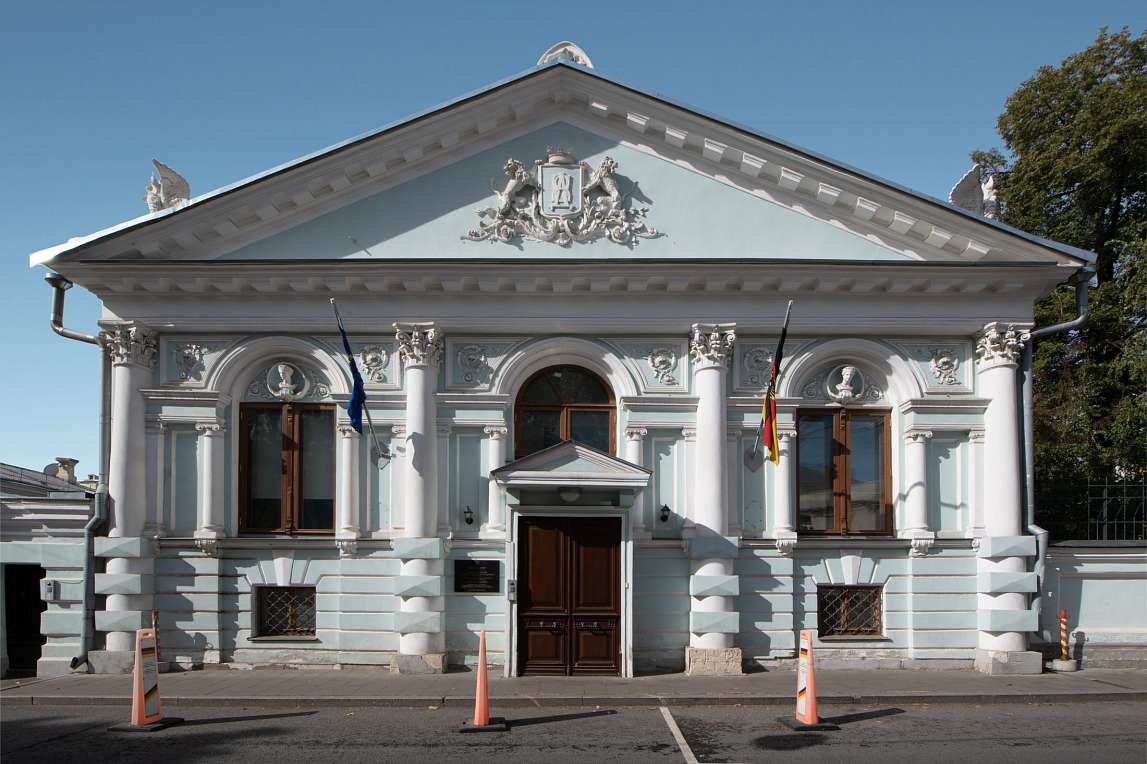





In the 17th century, Ivan IV decreed that briners, people responsible for making pickled goods and kvass, were to live near his Oprichny Palace. That is how Kislovskaya Sloboda (briners’ neighborhood) appeared on the map of Moscow. Later, in the 18th century, the nobility picked that area of old Moscow as their abode. Nikolay Naumov, Sergeant Major of Cavalry Guards, was among those who bought plots of land in Maly Kislovsky Lane. His manor used to occupy the land where numbers 3 and 5 now stand. The two-storey stone chambers that still serve as a base for modern number 5A, stood with their butt end facing the road: that was the custom before Peter I decreed that all the buildings should have their façades invariably face the street.
In 1761, the house was bought by Cavalry Sub-Lieutenant Nikolay Olenin and his wife Anna. In 1763, the Olenins gave birth to their son Aleksey, who later became the model for Mitrofanushka, the main character of D. I. Fonvizin’s play, The Minor. Up to age 19, young Master Olenin was widely known as an ignoramus, but after he read Fonvizin’s masterpiece, he recognized himself in Mitrofanushka and decided to do better. Indeed, Aleksey Olenin went on to be a very successful man: after studying at Dresden Artillery School and at Strasbourg University, he earned a place in the Russian Academy, the Fine Arts Academy and later, in the State Council of the Russian Empire.
I. S. Turgenev’s family rented a part of the property in 1832-1833; in the 1840s, after returning from exile, one of the Decembrist rebels, Z. G. Chernyshev, lived there at his brother-in-law’s.
In 1873, the house was bought by another notorious member of the gentry, a musician and P. I. Tchaykovsky’s friend, V. S. Shilovsky. Petr Iliich Tchaykovsky was a frequent visitor there, and he even wrote a mock verse to him once:
Do you remember, when in Kislovsky Lane,
On our way to Znamenka,
We frolicked like buns out of the oven,
Jumping right into the sodden snow...
In 1894, the house got a new façade designed by architect P. M. Samarin; letters VD that appeared on the pediment stood for Vladimir Dumnov, owner of a well-known Moscow publishing house that used to release first books by Turgenev and Gogol.
Up until the recent time, the manor used to accommodate the consular department of the Japanese Embassy. The restoration of the house, done and financed by GlavUpDK, concluded in 2014. To honor 200 years of diplomatic relations between Russia and Switzerland, the old manor was granted to the Swiss Ambassador as a personal residence.
The house was overhauled in 2011-2013; some parts of it were restored. Later-period structures were removed from the grounds; galleries connecting the buildings were disassembled and the fence facing Kalashny Lane was rebuilt. Restoration architects buttressed the existing foundations, ceiling vaults and cellar walls, recreated historical doors and window apertures.
Inside the building, they restored fancy hardwood floors, fireplaces, plaster and stucco moldings on walls and ceilings, marble windowsills, all window and door assemblies. Hardware and surviving lighting fixtures were repaired. Restoration of interior and façade sculptures, numerous relief and high relief figurines was of particular note. The roof was replaced with a historically accurate one, using the same roofing technology they used in the past. All engineering networks inside the building and on the grounds were replaced following the most advanced technologies. The manor grounds were landscaped, ground drops there were buttressed with supports.
After the restoration effort was finished, the mansion started serving as the Swiss Ambassador’s personal residence.